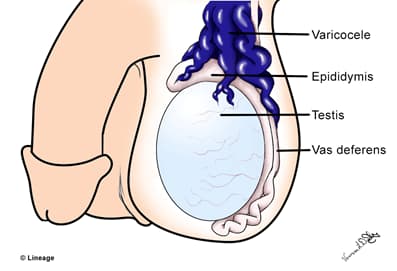Overview

Introduction
- A 13-year-old boy presents to the urgent care clinic and reports pain in his scrotal area. He denies any rashes or inciting trauma. The pain is dull and does not radiate anywhere. On physical exam, there is a “bag of worms” on palpation of the left scrotum. The scrotum does not transilluminate with light.
Introduction
- Clinical definition
- varicose veins in the scrotum
- Epidemiology
- incidence
- 15% in adult men
- 8-20% in adolescent boys
- most common cause of scrotal enlargement in adult males
- demographics
- around puberty in adolescents
- incidence
- Etiology
- primary varicocele
- venous reflux
- secondary varicocele
- renal cell carcinoma causing compression to the veins
- primary varicocele
- Pathogenesis
- increased venous pressure causing dilated veins in the pampiniform plexus
Presentation
- Symptoms
- primary symptoms
- dull ache in scrotum
- feeling of heaviness in scrotum
- may be asymptomatic
- infertility
- atrophy
- primary symptoms
- Physical exam
- standing or valsalva maneuver
- distension on inspection
- “bag of worms” on palpation
- illumination test with light
- standing or valsalva maneuver
- scrotum does not transilluminate
Imaging

- Ultrasound with doppler
- indications
- if varicocele is suspected but physical exam is inconclusive
- sensitivity and specificity
- indications
- both 100%
Differential
- Hydrocele
- positive transillumination test
- Testicular torsion
- abnormal cremasteric reflex
Treatment
- Conservative
- monitor with annual exams
- indications
- asymptomatic patients
- no testicular hypotrophy
- indications
- monitor with annual exams
- Operative
- surgical ligation or embolization
- indications
- pain
- infertility
- indications
- surgical ligation or embolization
- delayed growth of testes
Complications
- Infertility due to increased temperature
- Testicular atrophy



